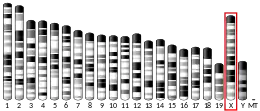| H2AB3 | |||||||||||||||||||||||||||||||||||||||||||||||||||
|---|---|---|---|---|---|---|---|---|---|---|---|---|---|---|---|---|---|---|---|---|---|---|---|---|---|---|---|---|---|---|---|---|---|---|---|---|---|---|---|---|---|---|---|---|---|---|---|---|---|---|---|
| Identifiers | |||||||||||||||||||||||||||||||||||||||||||||||||||
| Aliases | H2AB3, H2ABBD, H2AFB, H2A histone family member B3, H2A.B variant histone 3, H2AFB3, H2AB2, H2A.B.1 | ||||||||||||||||||||||||||||||||||||||||||||||||||
| External IDs | OMIM: 300445 MGI: 3644980 HomoloGene: 129517 GeneCards: H2AB3 | ||||||||||||||||||||||||||||||||||||||||||||||||||
| |||||||||||||||||||||||||||||||||||||||||||||||||||
| |||||||||||||||||||||||||||||||||||||||||||||||||||
| |||||||||||||||||||||||||||||||||||||||||||||||||||
| |||||||||||||||||||||||||||||||||||||||||||||||||||
| |||||||||||||||||||||||||||||||||||||||||||||||||||
| Wikidata | |||||||||||||||||||||||||||||||||||||||||||||||||||
| |||||||||||||||||||||||||||||||||||||||||||||||||||
H2A histone family, member B3 is a protein that in humans is encoded by the H2AFB3 gene.[5]
Histones are basic nuclear proteins that are responsible for the nucleosome structure of the chromosomal fiber in eukaryotes. Nucleosomes consist of approximately 146 bp of DNA wrapped around a histone octamer composed of pairs of each of the four core histones (H2A, H2B, H3, and H4). The chromatin fiber is further compacted through the interaction of a linker histone, H1, with the DNA between the nucleosomes to form higher order chromatin structures. This gene encodes a member of the histone H2A family. This gene is part of a region that is repeated three times on chromosome X, once in intron 22 of the F8 gene and twice closer to the Xq telomere. This record represents the most telomeric copy. [provided by RefSeq, Jul 2008].[5]
References
- 1 2 3 GRCh38: Ensembl release 89: ENSG00000277745 - Ensembl, May 2017
- 1 2 3 GRCm38: Ensembl release 89: ENSMUSG00000082482 - Ensembl, May 2017
- ↑ "Human PubMed Reference:". National Center for Biotechnology Information, U.S. National Library of Medicine.
- ↑ "Mouse PubMed Reference:". National Center for Biotechnology Information, U.S. National Library of Medicine.
- 1 2 "Entrez Gene: H2A histone family, member B3". Retrieved 2012-03-12.
Further reading
- Deng L, de la Fuente C, Fu P, Wang L, Donnelly R, Wade JD, Lambert P, Li H, Lee CG, Kashanchi F (November 2000). "Acetylation of HIV-1 Tat by CBP/P300 increases transcription of integrated HIV-1 genome and enhances binding to core histones". Virology. 277 (2): 278–95. doi:10.1006/viro.2000.0593. PMID 11080476.
- Chadwick BP, Willard HF (January 2001). "A novel chromatin protein, distantly related to histone H2A, is largely excluded from the inactive X chromosome". The Journal of Cell Biology. 152 (2): 375–84. doi:10.1083/jcb.152.2.375. PMC 2199617. PMID 11266453.
- Deng L, Wang D, de la Fuente C, Wang L, Li H, Lee CG, Donnelly R, Wade JD, Lambert P, Kashanchi F (October 2001). "Enhancement of the p300 HAT activity by HIV-1 Tat on chromatin DNA". Virology. 289 (2): 312–26. doi:10.1006/viro.2001.1129. PMID 11689053.
- Lusic M, Marcello A, Cereseto A, Giacca M (December 2003). "Regulation of HIV-1 gene expression by histone acetylation and factor recruitment at the LTR promoter". The EMBO Journal. 22 (24): 6550–61. doi:10.1093/emboj/cdg631. PMC 291826. PMID 14657027.
- Bao Y, Konesky K, Park YJ, Rosu S, Dyer PN, Rangasamy D, Tremethick DJ, Laybourn PJ, Luger K (August 2004). "Nucleosomes containing the histone variant H2A.Bbd organize only 118 base pairs of DNA". The EMBO Journal. 23 (16): 3314–24. doi:10.1038/sj.emboj.7600316. PMC 514500. PMID 15257289.
- Okuwaki M, Kato K, Shimahara H, Tate S, Nagata K (December 2005). "Assembly and disassembly of nucleosome core particles containing histone variants by human nucleosome assembly protein I". Molecular and Cellular Biology. 25 (23): 10639–51. doi:10.1128/MCB.25.23.10639-10651.2005. PMC 1291234. PMID 16287874.
- Naylor JA, Buck D, Green P, Williamson H, Bentley D, Giannelli F (July 1995). "Investigation of the factor VIII intron 22 repeated region (int22h) and the associated inversion junctions". Human Molecular Genetics. 4 (7): 1217–24. doi:10.1093/hmg/4.7.1217. PMID 8528212.
- El Kharroubi A, Piras G, Zensen R, Martin MA (May 1998). "Transcriptional activation of the integrated chromatin-associated human immunodeficiency virus type 1 promoter". Molecular and Cellular Biology. 18 (5): 2535–44. doi:10.1128/mcb.18.5.2535. PMC 110633. PMID 9566873.



